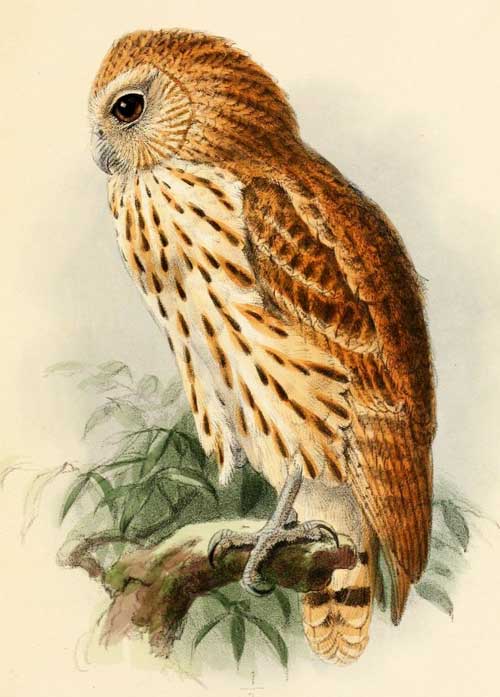
Scotopelia bouvieri
Superregnum: Eukaryota
Cladus: Unikonta
Cladus: Opisthokonta
Cladus: Holozoa
Regnum: Animalia
Subregnum: Eumetazoa
Cladus: Bilateria
Cladus: Nephrozoa
Superphylum: Deuterostomia
Phylum: Chordata
Subphylum: Vertebrata
Infraphylum: Gnathostomata
Megaclassis: Osteichthyes
Cladus: Sarcopterygii
Cladus: Rhipidistia
Cladus: Tetrapodomorpha
Cladus: Eotetrapodiformes
Cladus: Elpistostegalia
Superclassis: Tetrapoda
Cladus: Reptiliomorpha
Cladus: Amniota
Classis: Reptilia
Cladus: Eureptilia
Cladus: Romeriida
Subclassis: Diapsida
Cladus: Sauria
Infraclassis: Archosauromorpha
Cladus: Crurotarsi
Divisio: Archosauria
Cladus: Avemetatarsalia
Cladus: Ornithodira
Subtaxon: Dinosauromorpha
Cladus: Dinosauriformes
Cladus: Dracohors
Cladus: Dinosauria
Ordo: Saurischia
Cladus: Eusaurischia
Subordo: Theropoda
Cladus: Neotheropoda
Cladus: Averostra
Cladus: Tetanurae
Cladus: Avetheropoda
Cladus: Coelurosauria
Cladus: Tyrannoraptora
Cladus: Maniraptoromorpha
Cladus: Maniraptoriformes
Cladus: Maniraptora
Cladus: Pennaraptora
Cladus: Paraves
Cladus: Eumaniraptora
Cladus: Avialae
Infraclassis: Aves
Cladus: Euavialae
Cladus: Avebrevicauda
Cladus: Pygostylia
Cladus: Ornithothoraces
Cladus: Ornithuromorpha
Cladus: Carinatae
Parvclassis: Neornithes
Cohors: Neognathae
Cladus: Neoaves
Ordo: Strigiformes
Familia: Strigidae
Subfamilia: Striginae
Genus: Scotopelia
Species: Scotopelia bouvieri
Name
Scotopelia bouvieri Sharpe, 1875
References
Ibis - the International Journal of Avian Science, published by the British Ornithologists' Union p. 260
Vernacular names
čeština: Ketupa Bouvierova
suomi: Viirukalapöllö
The vermiculated fishing owl (Scotopelia bouvieri) is a species of owl in the family Strigidae. It is found within riverine forest in Angola, Cameroon, Central African Republic, Republic of the Congo, Democratic Republic of the Congo, Gabon, and Nigeria. This species was first described by the British zoologist Richard Bowdler Sharpe in 1875 and named in honour of the French naturalist Eugène Louis Bouvier.
Description
The vermiculated fishing owl is a large earless owl with a total length of 46 to 51 cm (18 to 20 in). The facial disc is a pale reddish-brown with an inconspicuous darker brown rim. The eyes are dark brown and the bill yellowish-brown with a darker tip. The crown is streaked with dark brown. The upper parts are cinnamon-brown finely marked with dark brown vermiculations. Across the shoulders, the outer webs of the feathers are whitish making a pale horizontal streak. The flight feathers and the tail feathers are barred. The underparts are whitish, heavily marked with dark streaks. The underwing and undertail coverts and the thighs are whitish and unstreaked. The legs and feet are yellow and unfeathered.[3]
Distribution and habitat
The vermiculated fishing owl is endemic to a large area of tropical west central Africa extending from southern Nigeria in the west to South Sudan in the east and northern Angola to the south. This bird is non-migratory.[4] Its habitat is gallery forests along rivers that are at least 10 m (33 ft) wide as well as pools and flooded areas in forests, and it sometimes occurs away from water.[3]
Behaviour
The vermiculated fishing owl is nocturnal and fishes from a perch on a low branch beside a large river, snatching fish from the water and also feeding on frogs, crabs, small mammals and birds.[3] In many places, crustaceans may be the most frequently eaten food. It roosts during the day in a tree near the river.[3][5] In southern Nigeria its favourite food appears to be Clarias catfish which have primitive lungs and rise to the surface periodically to breathe.[6]
Its voice is a low, croaking hoot, followed by four to eight staccato notes. A pair of owls often sing in duet, and being a fairly common species, several pairs of owls can sometimes be heard from the same locality.[3][5]
Breeding takes place from May to at least October and possibly later. The courtship involves much vocal duetting and the nesting site may be a pre-existing large stick nest. Little is known of the bird's breeding biology but this is probably similar to that of Pel's fishing owl (Scotopelia peli). The young are slow to mature.[3]
Status
The vermiculated fishing owl has a very wide range in tropical west central Africa amounting to a total area of about 3,333,000 square kilometres (1,287,000 sq mi). Within this range the bird seems relatively common and the population trend stable, so the international Union for Conservation of Nature lists its conservation status as being of "least concern".[4]
References
BirdLife International (2018). "Scotopelia bouvieri". IUCN Red List of Threatened Species. 2018: e.T22689048A130158713. doi:10.2305/IUCN.UK.2018-2.RLTS.T22689048A130158713.en. Retrieved 12 November 2021.
"Appendices | CITES". cites.org. Retrieved 2022-01-14.
König, Claus; Weick, Friedhelm; Becking, Jan-Hendrik (2010). Owls of the World. Bloomsbury Publishing. p. 349. ISBN 978-1-4081-3578-5.
"Vermiculated Fishing-owl Scotopelia bouvieri". BirdLife International. Retrieved 2015-03-10.
"Vermiculated Fishing-owl (Scotopelia bouvieri)". Handbook of the Birds of the World Alive. Lynx Edicions, Barcelona. Retrieved 2015-03-10.
Turk, Anthony (2000). "Fishing Owls at Agenbode, Nigeria". African Bird Club Bulletin. September (2): 107–108. doi:10.5962/p.309608.
Retrieved from "http://en.wikipedia.org/"
All text is available under the terms of the GNU Free Documentation License

